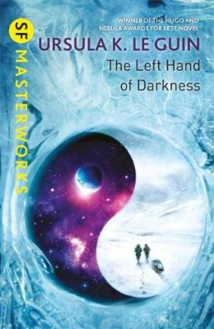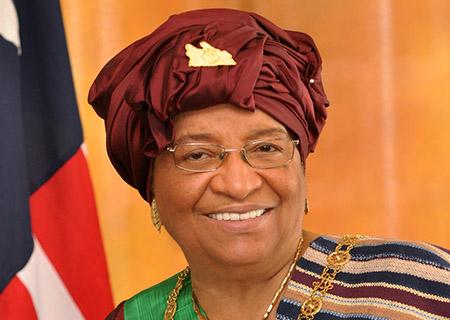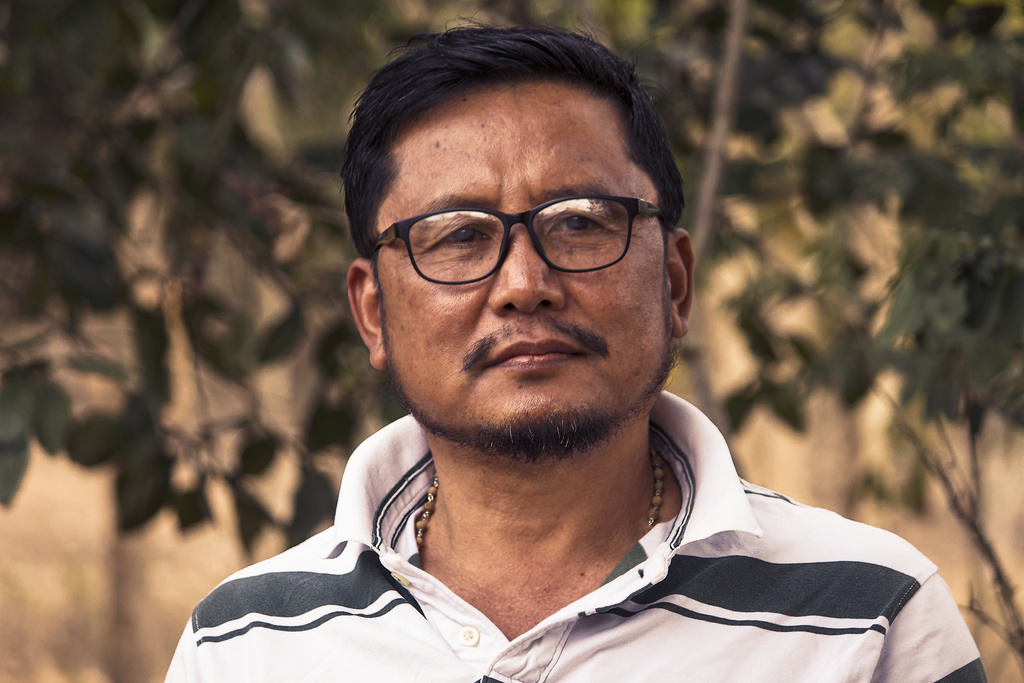NOAA Teacher at Sea
Samantha Adams
Aboard NOAA Ship Hi’ialakai
July 25 – August 3, 2017
Mission: Woods Hole Oceanographic Institution (WHOI) Hawaii Ocean Time-series Station deployment (WHOTS-14)
Geographic Area of Cruise: Hawaii, Pacific Ocean
Date: 21 July 2017
Weather Data from the “Bridge” (New York City, NY):
Latitude & Longitude: 40.78°N, 73.97°W. Air temperature: 90°F. Wind direction: Variable. Wind speed: 7 mph. Sky Cover: Broken.
… the Science:
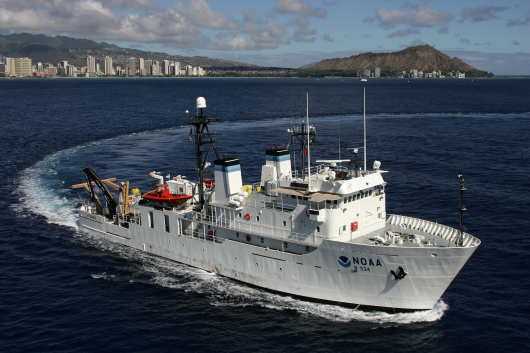
The NOAA ship Hi’ialakai. Photo courtesy of NOAA.
In just a few short days (huzzah!) I’ll have the privilege of sailing aboard NOAA ship Hi’ialakai on the Woods Hole Oceanographic Institution’s fourteenth Hawaii Ocean Time-series station deployment. Although I’ve not yet seen the ship or met the scientists I’ll be learning from and working with (I haven’t even left the mainland US!), I’ve been eagerly doing research to catch up on some of the basics.
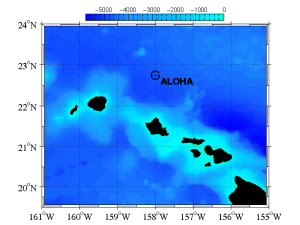
The location of the ALOHA measurement site. Photo courtesy of the University of Hawai’i.
Since 2004, the WHOTS stations have been measuring the interactions between the ocean and the atmosphere, as part of a long term study on ocean circulation. The site where the WHOTS stations are deployed is called ALOHA (A Long-Term Oligotrophic Habitat Assessment), located about 100 kilometers north of Oahu, Hawaii. The ALOHA station, maintained and monitored by the University of Hawai’i since 1988, makes oceanographic measurements (like water temperature, direction and speed of ocean currents, and amounts of plankton). The objective of the project is to use the area as a case study, as it is representative of the North Pacific subtropical gyre.
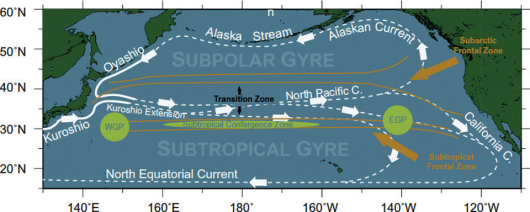
Diagram of the gyres (circulations) in the North Pacific Ocean. The green circles labeled “WGP” and “EGP” show the locations of the Western and Eastern Garbage Patches. Image courtesy of NOAA’s Pacific Islands Fisheries Science Center.
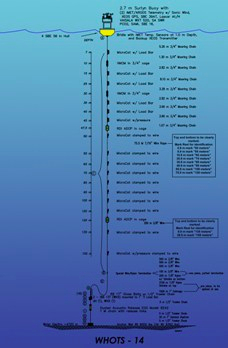
Diagram of the WHOTS station. Notice how many instruments are on the mooring line, below the surface! Photo courtesy of the University of Hawai’i.
WHOTS stations are moored (anchored) buoys. The buoy includes instruments floating on the surface to measure the weather (air temperature, wind speed, relative humidity, etc.), and there are also instruments along the mooring line to measure things like water temperature, currents and salinity. The instruments below the surface make measurements at the same time as the meteorological measurements on the surface, so that air and sea interactions can be accurately studied.
Scientists from the Woods Hole Oceanographic Institution visit the ALOHA site every year, to deploy a new WHOTS station, and retrieve older ones. Check out this video of the WHOTS-13 research cruise!
… the Teacher:
The summer I turned five, my house was struck by lightning. The bolt blew out my window, scattering glass shards across my bed, blasted chunks of concrete out of the driveway below, and set the garage on fire — which was almost immediately put out by torrential rain. I have been fascinated by the atmosphere ever since. When I learned I had been chosen for the WHOTS-14 research cruise, I was ecstatic. Not only because I’d been selected to participate in such an amazing opportunity, but because I would have the chance to learn more about the oceans, and how they interact with the ocean of air above them.
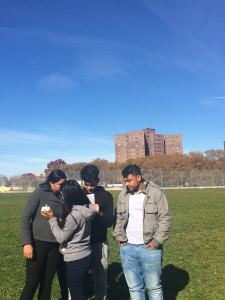
PAIHS Monroe students measuring water vapor and aerosols in the atmosphere, November 2016. Photo by SJ Adams.
I have taught science in New York City for eight years. For the past six years, I have taught twelfth grade geoscience at Pan American International High School at the James Monroe campus (PAIHS Monroe), in the Bronx. Each year, I do my best to get my students as excited about science as I am. For the past few years, that has meant dragging them outside in near-freezing temperatures to measure the local air quality. (So, maybe not the best method I could have chosen!)
(All of my students: “It’s too cold, Miss!” Samantha: “If it’s not too cold for the instruments, it’s not too cold for you!”)
These measurements were made as part of NASA GLOBE‘s Air Quality Student Research Campaign, and I was able to present their work at NASA Langley Research Center.
I hope that my experiences aboard the Hi’ialakai with the WHOTS-14 research cruise will teach me more about the ocean of air we live in, and help me develop more — warmer — ways to get my students interested in science!
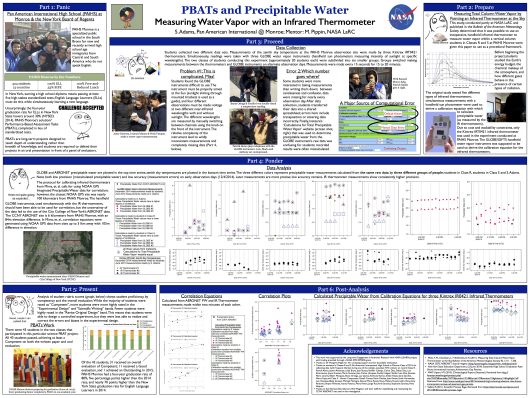
PAIHS Monroe students studied a method of measuring water vapor in the air with an infrared thermometer as part of NASA GLOBE’s Air Quality Student Research Campaign.
Did You Know?
From NOAA’s Office of Marine and Aviation operations page: “Hi‘ialakai is a combination of Hawaiian words. Hi‘i means “to hold in one’s arms”; ala is route; and kai is the sea. Thus, NOAA named this ship to signify “embracing pathways to the sea”.”
Share this:


